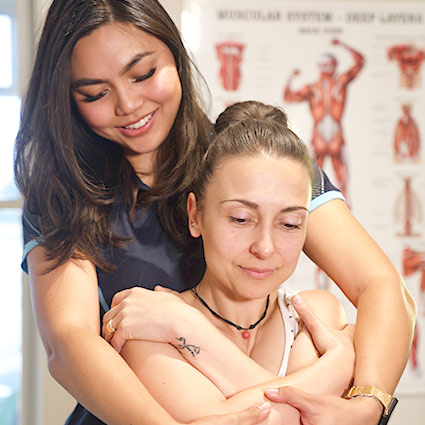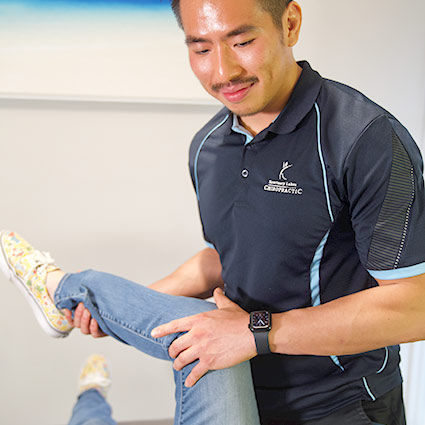Chiropractic Care
When someone comes into our clinic, our doctors need to find out what they know about chiropractic care, if they have seen any other health professionals for this problem, and what therapies they may have received. Once we know the answers to those questions, we can start the discussion.
For those new to chiropractic, we explain that chiropractors look for dysfunction in the spine, and where that might be causing nerve irritation. Then we explain the testing needed to get answers to these questions. Once found, our doctors use adjustments to correct the misalignment.
Our Techniques and Therapies
Our doctors may use several highly beneficial adjusting approaches to help improve your spinal biomechanics and reduce nervous system interference. Deciding which combination of techniques and therapies to use is based on your unique needs, our clinical judgement, and years of experience.
The primary adjusting techniques used in our clinic include:
- Gonstead: known as the “gold standard” in chiropractic. This full spine approach relies on X: rays and a heat: sensing instrument for a thorough evaluation and documented results.
- Diversified: the most widely used adjusting technique. After identifying which vertebrae have lost their normal motion or position, a specific manual thrust is applied to free up “stuck” spinal joints.
- SOT®: Sacro Occipital Technique® (SOT) helps normalise the relationship between the pelvis and the head, using gravity to make the necessary correction. SOT can reduce or eliminate pain or disorders in the head, neck, back, pelvis, extremities, and jaw (TMJ).
- The Activator® Method: the Activator tool is a spring: loaded, handheld mechanical adjusting instrument that allows chiropractors to provide a quick, low: force impulse at specific points. An extremely gentle method of adjustment, it may be used on children and the elderly.
- Dry Needling: this modality involves the insertion of tiny filament needles, also used for acupuncture, usually in or around myofascial trigger points. These hyper: irritable spots may present as “knots” within the muscle. Trigger points may refer pain to other parts of the body and create dysfunction.
- Instrument Assisted Soft Tissue Mobilisation (IASTM): uses tools to enable clinicians to efficiently locate and provide care to individuals diagnosed with soft tissue dysfunction.
- Sports Taping (Rigid and Kinesiology): taping is used to support, relieve, or prevent athletic injuries.
Take Advantage of Our Introductory Offer
With our introductory offer, you’ll receive a comprehensive consultation*, including detailed health history, orthopaedic and neurological examinations, functional movement and postural assessments, and digital X-rays, if necessary.
If you’ve been to a chiropractor before and prefer to be adjusted in a particular way, let our chiropractors know. We want you to relax, enjoy, and fully benefit from your chiropractic care. Contact us today or book online to get started.
CONTACT US »
*consult only available with our associate chiropractors




